Despite some signs of slowdown in the economy, the biggest stories in the market still revolve around big tech earnings and artificial intelligence. Big 7 stocks stretch across technology, communications, and consumer discretionary: Microsoft [MSFT], Apple [AAPL], and Nvidia [NVDA] in technology; Meta Platforms [META] and Alphabet [GOOG] in communications; and Amazon [AMZN] and Tesla [TSLA] in consumer discretionary).
As a result, these three sectors have seen a large boost from technology and AI factors. This is especially so, with several of these companies reporting earnings beats this past week. Now crypto is back above $35,000. With the possibility of spot bitcoin ETFs growing closer, investors are keeping their eye on riskier investments. But instinct also tells us that consumer spending is running out of steam.
So when is it time to start increasing your allocation back into defensive sectors or less risky assets?This note looks at the consumer discretionary sector vs. the consumer staples sector and what these ETFs can tell us about the market.
Sector performance of discretionary still far ahead of staples, despite recent shifts in sentiment.
On a market-cap-weighted basis, the consumer discretionary sector is the third (out of 11) best-performing sector YTD after communications and technology. In the Consumer Discretionary Select Sector SPDR Fund (XLY), these two stocks make up over 40% of the ETF’s weight. On an equal-weighted basis (which excludes the overweighted exposure to Amazon and Tesla), the sector is only the fifth best-performing sector (as measured by the Invesco S&P 500 Equal Weight Consumer Discretionary ETF [RSPD]). YTD, consumer discretionary ETFs have seen the fourth and seventh highest inflows out of the broad universe of sector ETFs. Recently that sentiment has shifted as the sector has seen the highest outflows on a one-month basis.
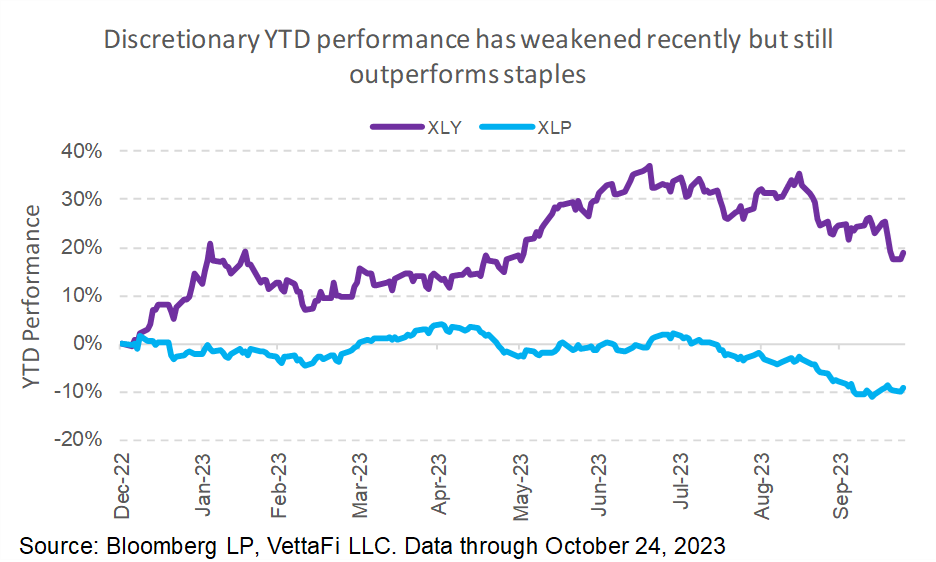
The staples sector, on the other hand, has been the third-worst-performing sector on a market-cap-weighted basis (the Consumer Staples Select Sector SPDR Fund [XLP]) and the worst-performing sector on an equal-weighted basis (the Invesco S&P 500 Equal Weight Consumer Staples ETF [RSPS]). The gap has narrowed between the two recently, but overall, discretionary still significantly outperforms staples despite a weaker consumer.
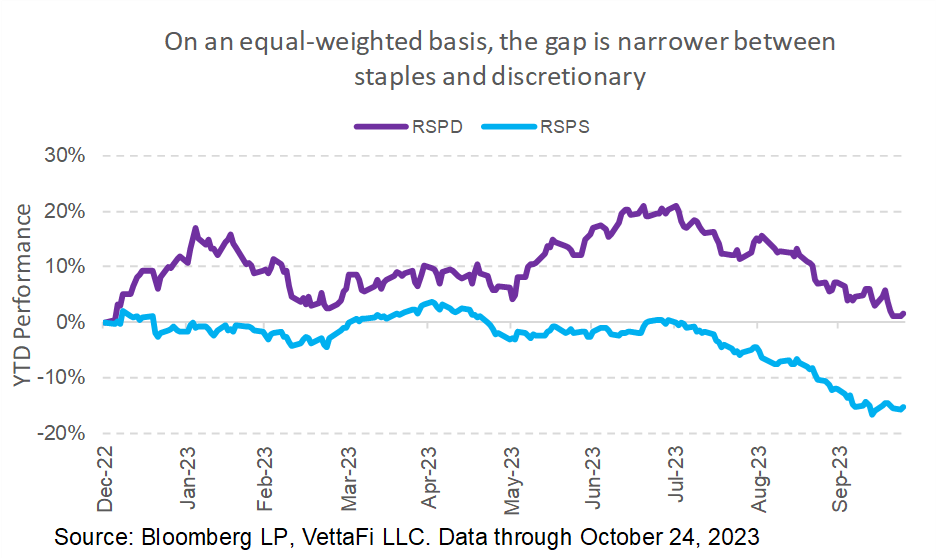
Staples show relative strength but margin pressure and other micro factors moderating strength.
Instincts would probably tell us that it is now time to rotate into staples. This is because consumers are holding back from discretionary spending. There are two main exceptions: spending on experiences like concerts and travel, or shopping for discounted goods like e-commerce items. If you compare the top and bottom holdings of consumer discretionary ETFs, this follows the trend. Top performers of XLY include Amazon and Tesla — two of the big seven stocks.
The rest are mostly travel stocks. These stocks are benefiting from the return to travel and the recovery from lower stock prices over the past two years. Most of the worst performers are goods retailers. They have been suffering from lower consumer spending throughout the year as customers cut back on things like clothing items and accessories. Consumers have been cutting back on discretionary goods. But they are still not ready to let go of discretionary services, which has been keeping the sector afloat.
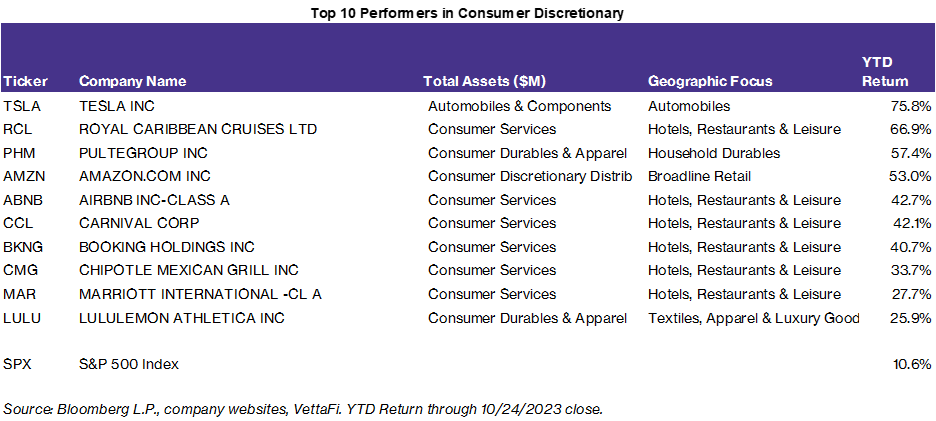
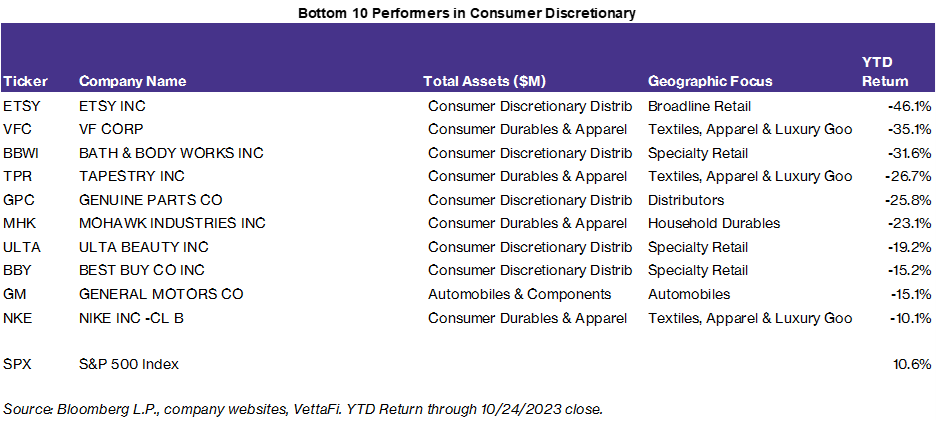
Alternatively, staples have traditionally been more stable throughout economic cycles. This is because consumers maintain their level of spending on staples products whether they have more or less money to spend). These are products like groceries, hygiene products, and other household goods. Some big names in the sector revealed that these trends have overall been accurate. In Costco’s (COST) most recent earnings report, the company reported membership up 8% y/y, which benefited from consumers looking for discounted prices and eating at home. And more recently, Coca-Cola (KO) reported earnings with higher-than-expected revenues as consumers continued to buy more volume despite higher prices.
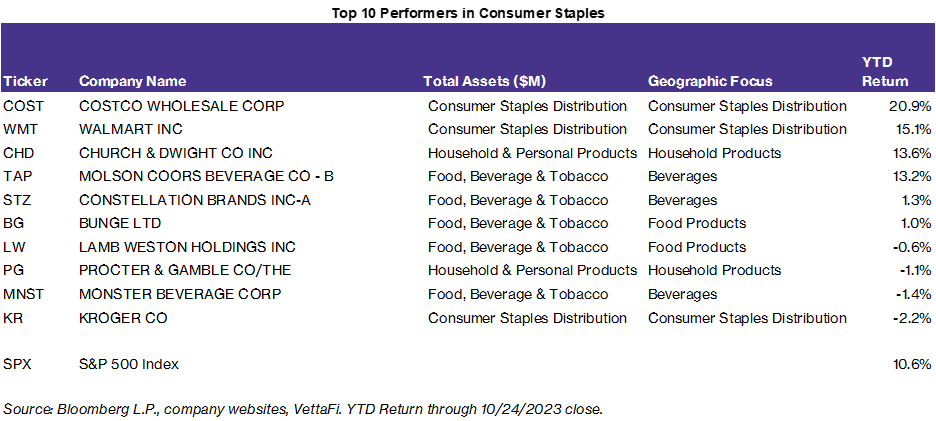
Some of the worst performers in the sector, however, like Dollar General (DG) and Walgreens (WBA), have been experiencing profit issues. This is due to higher input costs and a more reluctant consumer. Both companies have brought in a new CEO to turn around profits. But the effects of those changes likely won’t be seen until later. There is overall resilience in the staples sector. But many of these companies are still having trouble passing on costs to consumers. They are also suffering from a weaker consumer (much like the discretionary sector), which has diminished the sector’s strength.
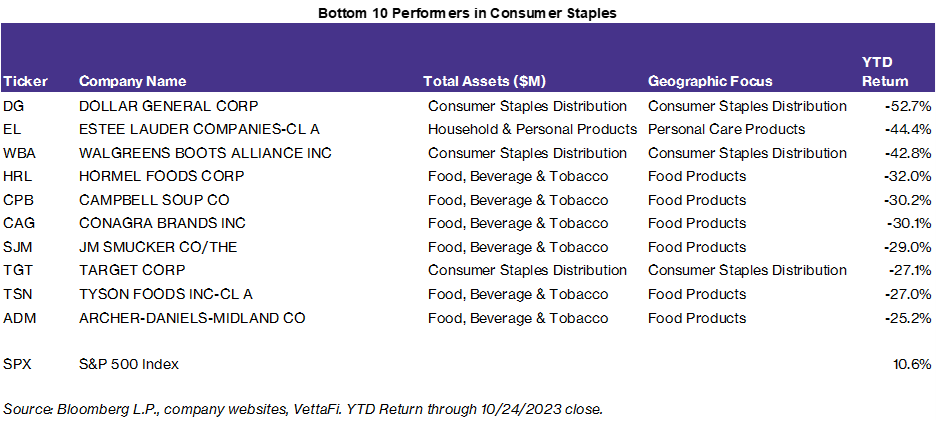
Bottom Line:
Despite moderating consumer spending, the consumer discretionary sector still seems exciting compared to the consumer staples sector. That sector has suffered from weaker margins and other company-specific issues. These factors have been weakening the strength of the consumer staples sector this year. But the performance gap has been shrinking. The staples sector still may be appealing and relatively cheap compared to consumer discretionary and technology sectors.
Margin issues are typically more short term and likely to resolve. But issues like consumer spending tend to be longer term. The discretionary sector may still have some steam left. But it is likely we will seem some of that sentiment continue to shift toward staples if the current economic environment continues and investors prepare for a more cautious outlook ahead.
For more news, information, and analysis, visit the Innovative ETFs Channel.
vettafi.com is owned by VettaFi LLC (“VettaFi”). VettaFi is the index provider for BNGE, for which it receives an index licensing fee. However, BNGE is not issued, sponsored, endorsed, or sold by VettaFi, and VettaFi has no obligation or liability in connection with the issuance, administration, marketing, or trading of BNGE.








